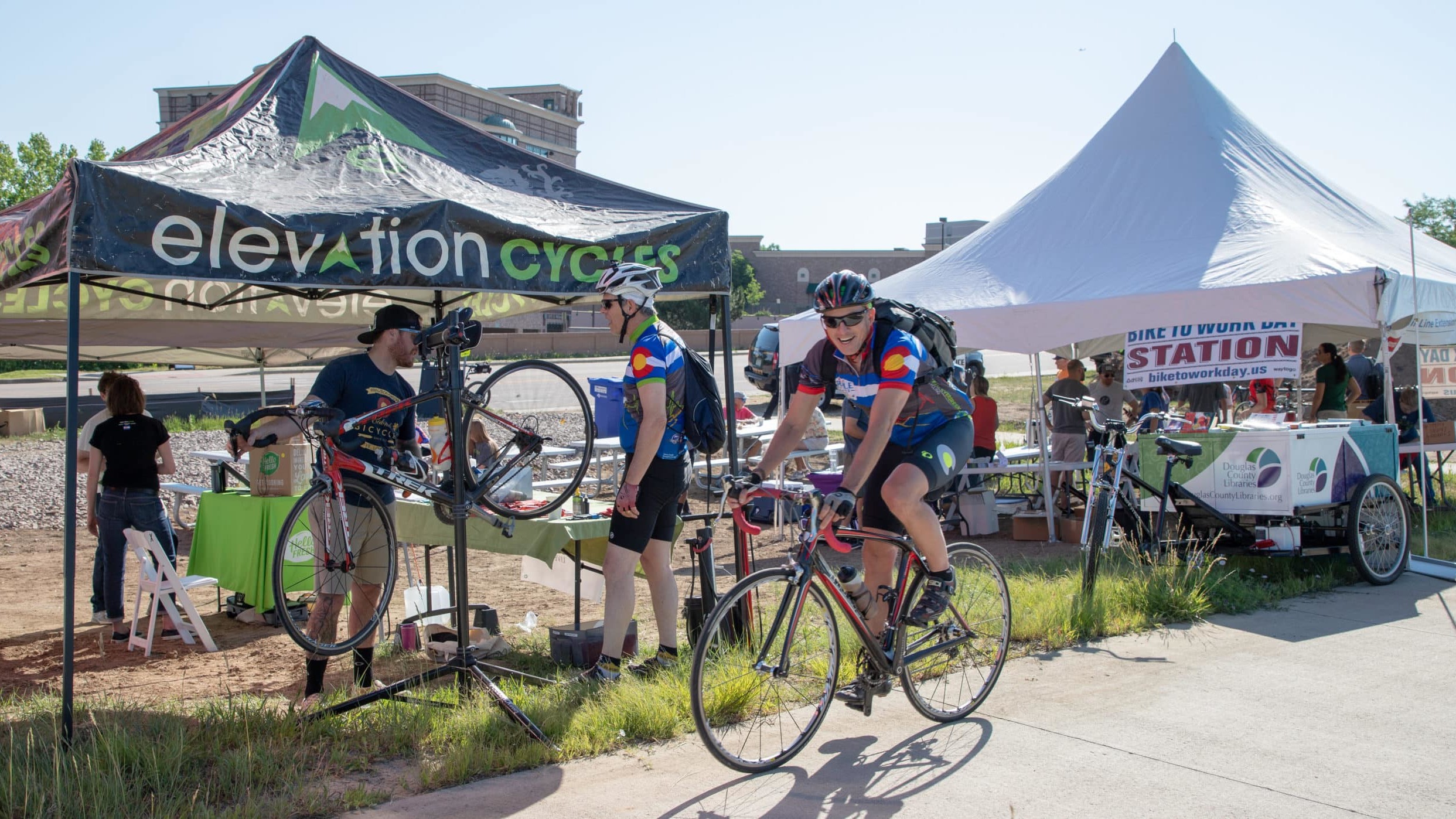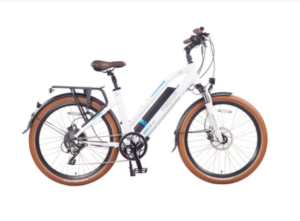As the pandemic pushed us outdoors, Coloradans predictably were scrambling to find bikes, and specifically E-bikes.. Recently, to my surprise, I joined them.
When I told my 20-year-old daughter I was shopping for an E-bike her response was, “Mom, it’s supposed to be exercise, why would you get one of those?”
I must admit I was resistant myself. I began shopping for more of a cruiser-style bike to enjoy the trail systems in Parker. However, every bike shop I visited touted the ease of use and the flexibility an e-bike offers from commuting, recreating, and exercising. Over time, I came around. The sales staff even convinced me I might even miraculously get in better shape as I would ride farther and faster than ever before. After great deliberation, I took the plunge and made a significant investment, becoming the latest statistic to join this e-movement.
Prior to my purchase, I was completely unaware of a new Colorado law that took effect in August of 2017 specific for E-bikes (HB 17-1151). I quickly became an e-bike student as I had many questions: Which trails can I ride my bike on? Do I need a special permit or do I have to register my e-bike? Would my new purchase be covered under my home owner’s insurance policy in the event of theft or damage? What happens if my 14-year-old takes it for a spin to the pool?
Lesson # 1- E-Bike Classification
Aligning with my mantra of “go big or go home”, I opted for the Class III, envisioning long rides on the trail from Breckenridge to Frisco in the summer. Unbeknownst to me, Breckenridge recently determined Class III e-bikes are not allowed on that trail because of their high rate of speed. Class I and Class II e-bikes can be ridden on a bike, pedestrian, or multi-use paths. Class III can only be ridden on public roads.
Image Courtesy of State Farm: https://www.statefarm.com/simple-insights/family/e-bikes
Colorado leaves the decision as to whether to allow e-bikes on trails up to local municipalities. Douglas County and Arapahoe County allow class 1 and 2 e-bikes on local trails. I purchased a Class III bike, but quickly learned I can adjust the programming to bring it down to a Class II (max speed 20 mph) while riding on trails that prohibit Class III bikes.
Lesson # 2- Age restrictions and helmets
My 14-year-old will not be borrowing my Class III e-bike anytime soon, at least not for two years. Similar to driving a car, riders under the age of 16 are not allowed to ride a Class III E-bike. Everyone should always wear a helmet, and Colorado law requires riders of e-bikes under the age of 18 to wear a bike helmet with the strap in place while the Class III is in motion.
Lesson # 3- Cost and Insurance
The good news, there are no additional taxes, permits, or registration requirements should you chose to cruise on with your decision. The size of your initial investment should be considered. A good quality entry-level e-bike costs upwards of $1,000, an average value e-bike runs around $3,000, and a high-end e-bike costs as much as $12,000. With this type of investment it is important to contact your insurance provider to ensure your e-bike investment is covered under your homeowners or renter’s policy. If not, it is probably a good idea to purchase an e-bike policy. They are relatively affordable and offered by a variety of providers.
Lesson # 4 Battery Life Expectancy & Care
Typically you can expect somewhere between 25 and 70–miles of travel on a single charge of an e–bike. Batteries are typically lithium and should be charged at least once a month if the bike is not being ridden much. I was told treat your battery like your pets, if it is too cold for your pet outside or in your garage, best to take your battery off of the bike and store indoors. Replacing your battery will be the most expensive upkeep, but you should be able to maintain the life of your battery for three years if you take care of it properly.
Suggested Reading:
Lesson #5 E-bike Motor Matters
When purchasing your e-bike, motor placement matters. There are two types of motors, mid-drive and the more traditional hub motor. A mid-drive motor will assist you when you are not pedaling and is recommended for more off-road and hilly terrain and are known for higher performance. The mid-drive motor is positioned directly in between the pedals at the bike’s bottom bracket. For a hub-drive the motor is positioned on the front or rear wheel with the motor in the wheel hub.
I selected the Magnum Metro, which is a hub drive and recommended more for flat terrain and leisure. Realistically, I may have joined the movement, but you will not see me in any extreme competitions anytime soon. The staff at Voltaire Cycles in Highlands Ranch was incredibly helpful and knowledgeable and even delivered my bike to my home.
The e-bike trend is only gaining traction and momentum. I highly recommend taking one for a spin, not just to get outdoors and enjoy the Colorado sunshine but as a true alternative to driving alone in your single occupancy vehicle.
Below are some e-bike providers in Denver South.
Safe Travels my fellow e-bikers!
- Alpha Bicycle Company – 8006 E Arapahoe Rd, Centennial, CO 80112
- Bike Source – Highlands Ranch – 2690 E County Line Rd Unit P, Highlands Ranch, CO 80126
- Elevation Cycles – Highlands Ranch – 2030 E County Line Rd, Highlands Ranch, CO 80126
- Giant of Centennial – 12201 E Arapahoe Rd B6, Centennial, CO 80112
- Pedego E-Bikes of South Denver – 6888 S University Blvd, Centennial, CO 80122
- Voltaire Cycles of CO – 9579 S University Blvd Unit 170, Highlands Ranch, CO 80126



